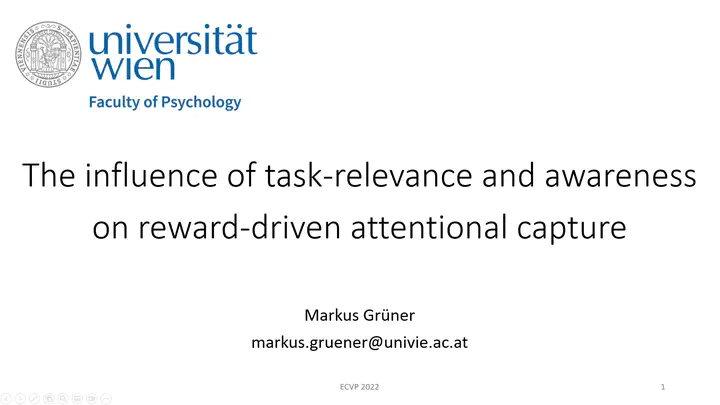The influence of task-relevance and awareness on reward-driven attentional capture

Abstract
During search for shape-singleton targets that stand out by their shape among more shape-homogenous distractors, distractors carrying a color associated with reward can capture visual attention, seemingly despite being task-irrelevant and not salient, indicating that reward-driven capture could be different from top-down and bottom-up attentional guidance. However, if association with reward increases a color’s salience – as sometimes assumed –, a rewarded color would stand out as a singleton compared to surrounding stimuli with colors not or less associated with reward. Consequently, distractors carrying a rewarded color could match an observer’s attentional control setting during search for (shape) singleton targets. To test this possibility, we used the classical design for investigating reward-driven capture, with a learning block for the acquisition of color-reward associations. However, besides a singleton-search task, we added a feature-search task as an additional transfer block. While we found reward-driven capture during singleton search (replicating previous results), there was no evidence for reward-driven capture during feature search. Additionally, we registered participants’ awareness of the reward-color association. Unexpectedly, we found that even during singleton search, reward-driven capture was restricted to participants who did not notice the reward-color association, suggesting that reward-driven attentional capture depends not only on task-relevance but also on unawareness of the now irrelevant reward-color association. We conclude that the influence of reward on attentional guidance is more complex than previously thought, with interactions of task relevance and awareness that warrant further research.